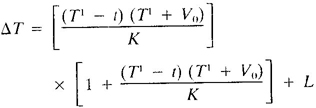
In order to promote public education and public safety, equal justice for all, a better informed citizenry, the rule of law, world trade and world peace, this legal document is hereby made available on a noncommercial basis, as it is the right of all humans to know and speak the laws that govern them.
18TH EDITION 1992
Prepared and published jointly by:
AMERICAN PUBLIC HEALTH ASSOCIATION
AMERICAN WATER WORKS ASSOCIATION
WATER ENVIRONMENT FEDERATION
Joint Editorial Board
Arnold E. Greenberg, APHA, Chairman
Lenore S. Clesceri, WEF
Andrew D. Eaton, AWWA
Managing Editor
Mary Ann H. Franson
Publication Office
American Public Health Association
1015 Fifteenth Street, NW
Washington, DC 20005
Copyright © 1917, 1920, 1923, and 1925 by
American Public Health Association
Copyright © 1933, 1936, and 1946 by
American Public Health Association
American Water Works Association
Copyright © 1955, 1960, and 1965 by
American Public Health Association
American Water Works Association
Water Pollution Control Federation
Copyright © 1971 by
American Public Health Association
American Water Works Association
Water Pollution Control Federation
Copyright © 1976 by
American Public Health Association
American Water Works Association
Water Pollution Control Federation
Copyright © 1981 by
American Public Health Association
American Water Works Association
Water Pollution Control Federation
Copyright © 1985 by
American Public Health Association
American Water Works Association
Water Pollution Control Federation
Copyright © 1989 by
American Public Health Association
American Water Works Association
Water Pollution Control Federation
Copyright © 1992 by
American Public Health Association
American Water Works Association
Water Environment Federation
All rights reserved. No part of this publication may be reproduced, graphically or electronically, including entering in storage or retrieval systems, without the prior written permission of the publishers.
30M7/92
The Library of Congress has catalogued this work as follows:
American Public Health Association.
Standard methods for the examination of water and wastewater.
ISBN 0-87553-207-1
Printed and bound in the United States of America.
Composition: EPS Group, Inc., Hanover, Maryland
Set in: Times Roman
Printing: Victor Graphics, Inc., Baltimore, Maryland
Binding: American Trade Bindery, Baltimore, Maryland
Cover Design: DR Pollard and Associates, Inc., Arlington, Virginia
Temperature readings are used in the calculation of various forms of alkalinity, in studies of saturation and stability with respect to calcium carbonate, in the calculation of salinity, and in general laboratory operations. In limnological studies, water temperatures as a function of depth often are required. Elevated temperatures resulting from discharges of heated water may have significant ecological impact. Identification of source of water supply, such as deep wells, often is possible by temperature measurements alone. Industrial plants often require data on water temperature for process use or heat-transmission calculations.
* Approved by Standard Methods Committee. 1988.
Normally, temperature measurements may be made with any good mercury-filled Celsius thermometer. As a minimum, the thermometer should have a scale marked for every 0.1°C, with markings etched on the capillary glass. The thermometer should have a minimal thermal capacity to permit rapid equilibration. Periodically check the thermometer against a precision thermometer certified by the National Institute of Standards and Technology (NIST, formerly National Bureau of Standards)* that is used with its certificate and correction chart. For field operations use a thermometer having a metal case to prevent breakage.
Depth temperature required for limnological studies may be measured with a reversing thermometer, thermophone, or thermistor. The thermistor is most convenient and accurate; however, higher cost may preclude its use. Calibrate any temperature measurement devices with a NIST-certified thermometer before field use. Make readings with the thermometer or device immersed in water long enough to permit complete equilibration. Report results to the nearest 0.1 or 1.0°C, depending on need.
The thermometer commonly used for depth measurements is of the reversing type. It often is mounted on the sample collection apparatus so that a water sample may be obtained simultaneously. Correct readings of reversing thermometers for changes due to differences between temperature at reversal and temperature at time of reading. Calculate as follows:

where:
ΔT = correction to be added algebraically to uncorrected reading,
T1 = uncorrected reading at reversal,
t = temperature at which thermometer is read,
Vo = volume of small bulb end of capillary up to 0°C graduation,
K = constant depending on relative thermal expansion of mercury and glass (usual value of K = 6100), and
L = calibration correction of thermometer depending on T1
If series observations are made it is convenient to prepare graphs for a thermometer to obtain ΔT from any values of T1 and t.
WARREN, H.F. & G.C. WHIPPLE. 1895. The thermophone—A new instrument for determining temperatures. Mass. Inst. Technol Quart. 8:125.
SVERDRUP, H.V., M.W. JOHNSON & R.H. FLEMING, 1942. The Oceans, Prentice-Hall, Inc., Englewood Cliffs, N.J.
AMERICAN SOCIETY FOR TESTING AND MATERIALS. 1949. Standard Specifications for ASTM Thermometers. No. E1-58, ASTM, Philadelphia, Pa.
REE, W.R. 1953. Thermistors for depth thermometry. J. Amer. Water Works Assoc. 45:259.
* Some commercial thermometers may be as much as 3°C in error.
2-59